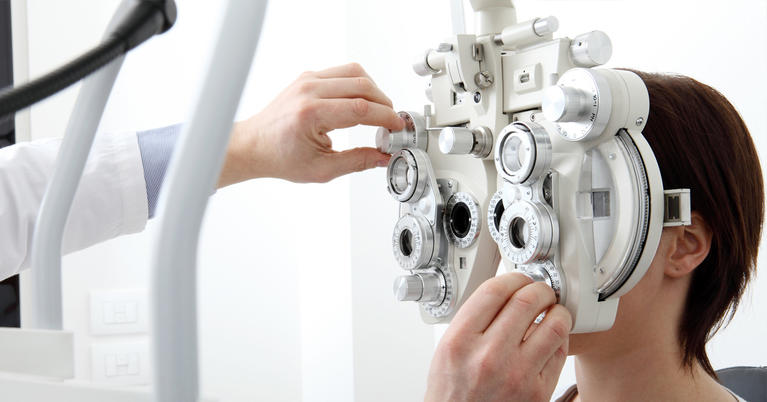Discover a Neurologist in Andalusia: Specialized Clinics and Treatment Providers
Discover a Neurologist in Andalusia: Specialized Clinics and Treatment Providers
Blog Article
The Pros and Cons of Various Refractive Surgeries for Boosted Eyecare

LASIK Surgical Procedure
LASIK surgical procedure is a commonly carried out refractive treatment that intends to fix vision problems such as farsightedness, nearsightedness, and astigmatism. This medical method has actually gotten appeal due to its effectiveness in providing patients with clearer vision and reducing their dependency on glasses or contact lenses. During the treatment, a slim flap is developed on the cornea, and a laser is made use of to reshape the underlying cells, remedying the refractive mistake. The flap is then repositioned, enabling quick healing and minimal pain for the person.
One of the key benefits of LASIK surgery is the rapid renovation in vision experienced by lots of people. It is vital for individuals considering LASIK surgical treatment to undergo a comprehensive evaluation by an eye care specialist to identify if they are ideal prospects for the procedure.
PRK Procedure
The PRK treatment, additionally understood as Photorefractive Keratectomy, is a kind of refractive surgical procedure that intends to correct vision issues similar to LASIK surgical treatment. Unlike LASIK, which entails creating a flap in the cornea, PRK functions on the surface layer of the cornea.
One of the benefits of PRK over LASIK is that it eliminates the danger of flap-related problems given that no flap is developed during the surgical procedure. Despite the longer recovery duration, PRK can be a suitable option for people looking for vision correction surgical treatment.
SMILE Surgical Procedure
A cutting-edge refractive surgical procedure method obtaining popularity in the field of ophthalmology is SMILE Surgical procedure. Tiny Cut Lenticule Removal (SMILE) is a minimally intrusive treatment that corrects vision by improving the cornea utilizing a femtosecond laser. Unlike standard LASIK surgical treatment, SMILE Surgical treatment entails creating a little incision in the cornea to extract a lenticule, which leads to much less disruption to the corneal structure and potentially quicker recuperation times.
One of the key advantages of SMILE Surgical treatment is its capacity to treat nearsightedness (nearsightedness) and astigmatism with high precision, leading to exceptional visual outcomes for individuals. The minimally invasive nature of the procedure likewise lowers the risk of complications such as dry eye syndrome, making it a positive option for people seeking refractive surgical treatment.

LASEK Technique
Having checked out the advantages and considerations of SMILE Surgical treatment, one more noteworthy refractive surgical treatment strategy worth analyzing is the LASEK Method. LASEK, which represents Laser-Assisted Subepithelial Keratectomy, is a form of laser eye surgery that intends to deal with refractive mistakes such as myopia (nearsightedness), hyperopia (farsightedness), and astigmatism.
Unlike LASIK, LASEK does not entail creating a corneal flap. Rather, during a LASEK treatment, the cosmetic surgeon utilizes a diluted alcohol option to loosen the thin outer layer of the cornea, understood as the epithelium.
Among the primary benefits of LASEK is that it can be suitable for people with thin corneas who may not be excellent prospects for LASIK. In addition, LASEK normally causes very little post-operative pain and a quicker recovery time compared to PRK. Nonetheless, the aesthetic recovery process with LASEK may be somewhat longer than with LASIK.
Implantable Get In Touch With Lenses
Implantable Get in touch with Lenses offer a long-lasting vision improvement solution for individuals looking for a choice to traditional get in touch with lenses or glasses. These lenses, additionally called phakic intraocular lenses, are surgically placed into the eye to fix refractive errors such as nearsightedness (nearsightedness), hyperopia (farsightedness), and astigmatism. cardiologist andalusia. Unlike standard get in touch with lenses that rest on the surface area of the eye, implantable contact lenses work within the eye itself, providing clear vision without the need for everyday maintenance or removal
One of the crucial advantages of implantable get in touch with lenses is their durability. Once put, they can stay in the eye indefinitely, providing regular and stable vision adjustment. Additionally, these lenses can be a reference superb alternative for people who are not excellent candidates for laser eye surgery or that like a relatively easy to fix vision modification treatment.
Nevertheless, implantable get in touch with lenses do bring some risks, including the possibility for cataracts or increased eye stress. It is vital for people considering this option to seek advice from an eye care professional to figure out if implantable contact lenses are the best choice for their specific demands and eye wellness.
Final Thought
In final thought, each kind of refractive surgical treatment has its own advantages and disadvantages. LASIK surgery is preferred for its quick healing time, while PRK treatment might be suitable for clients with slim corneas.

In General, SMILE Surgical treatment presents an encouraging alternative for people looking to improve their vision via refractive surgical procedure.
Report this page